Term archive
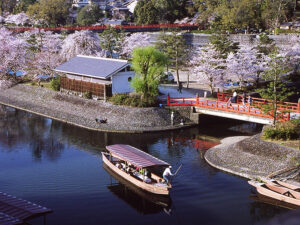
投稿タイプ:sightseeing
Tonoshima Island & Tachibanajima Island on Uji River
On Uji River, there are Tonoshima Island and Tachibanajima Island. They are collectively called Nakanoshima Island. Nakanoshima Island and Yorimichi Park on the left bank are collectively called Uji Park. Four bridges (Asagiri Bridge, Kisen Bridge, Tachibana Bridge and Nakajima Bridge) connect the two islands and both riverbanks.
This area is renowned as a great hanami (cherry-blossom viewing) spot, and in early April, Ujigawa Sakura Festival is held on and around the islands.
In the summer, “Cormorant Fishing on the Uji River” is held. (Cormorants are birds. Cormorant masters wearing traditional clothing manipulate them to catch fish.) This is why you can see a cormorant shed on Tonoshima Island.
In early October, Uji Tea Festival is held in this area, too.
On Tonoshima Island, there stands a beautiful 13-story pagoda that is around 15 meters tall. It was built by Eison in 1286, praying for the souls of fish. Eison was a Buddhist monk of Saidaiji Temple in Nara. In 1756, a great flood caused the pagoda to collapse and become buried. Around the end of the Meiji Period (1868-1912), A large part of it was excavated, and the entire pagoda was rebuilt.
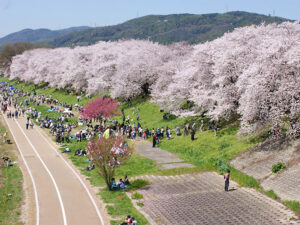
投稿タイプ:sightseeing
The Sewaritei Area in Yodogawa Riverside Park
The Sewaritei area is located north of Iwashimizu-hachimangu Station (Keihan Main Line), immediately after crossing Goko-bashi Bridge. The cherry blossom tunnel stretches for approximately 1.4 kilometers in a narrow area sandwiched between the Kizu River and Uji River. These two rivers merge with the Katsura River shortly after their confluence, changing their names to the Yodo River and flowing through Osaka. In spring, the Sewaritei bank offers a breathtaking experience of walking through the tunnel of cherry blossoms. In this season, there is a fun festival in this area, with food, drinks, and more. It’s a very popular hanami (cherry-blossom viewing) spot for people of all ages, from children and young people to the elderly. Additionally, the observation tower of the Sakura-deai Visitor Center offers a spectacular view of the long cherry blossom carpet. It's also enjoyable just to relax in the spacious grassy area.
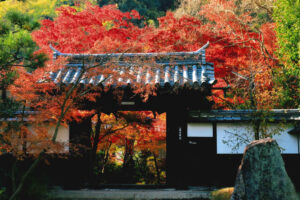
投稿タイプ:sightseeing
Zenporitsuji Temple (The Maple Tree Temple)
Zenporitsuji Temple, located in the southeast of Iwashimizu Hachimangu, was founded in the mid-thirteenth century, as Zenpoji Kyusei, the top administrative official of Iwashimizu Hachimangu at that time, donated his residence to establish a bodaiji (family memorial temple). Upon its founding, Jisso Shonin, a high priest of Todai-ji Temple in Nara, was invited.
Ki no Yoshiko, a great-granddaughter of Zenpoji Kyusei, married Ashikaga Yoshiakira and gave birth to Ashikaga Yoshimitsu, the third shogun (military ruler) of the Ashikaga shogunate, which deepened the temple’s ties to the Ashikaga family. Ki no Yoshiko donated many momiji (Japanese maple) trees to the temple, and they were planted on the precincts. Even now, the leaves of about 100 momiji trees turn red, creating a beautiful view in the fall. This stunning autumn display earned the temple the fascinating nickname of Momijidera (the maple tree temple).
The temple’s main hall and main gate are designated as Cultural Properties of Kyoto Prefecture. In addition, the temple has 9 Cultural Properties of Yawata City, such as a statue of the deity Hachiman, large statues of Buddhist Wisdom Kings Fudo Myo-o (Acala) and Aizen Myo-o (Rāgarāja), and a statue with a jeweled crown Amida Nyorai (Amida Buddha). (Reservations are required to view the interior of the main hall.)
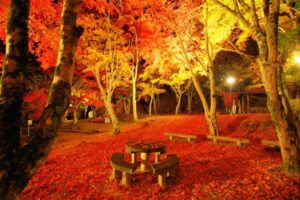
投稿タイプ:sightseeing
Mt. Kasagi / Kasagiyama Nature Park
Kasagiyama Nature Park, located in Kasagi Town, is an area rich in nature, including Mt. Kasagi. The mountain, on the south bank of the Kizu River, is about 288 meters tall and known for its mystical, gigantic rock formations, earning it the nickname of the “Theme Park of Giant Rocks.” It is a nationally designated Historic Site and Place of Scenic Beauty. The mountain paths offer a challenging yet rewarding climb with spectacular views from the summit. Most people with average physical fitness can reach the top.
If you're lucky, you also might see a sea of clouds from the top of the mountain in the cold season. The fantastic sight creates the sensation of being on an island floating in the sky. The mountaintop was also a renowned spot for moon gazing in the Edo Period (around 1603-1868). Today, the mountain is famous for its fall foliage, with about 3,000 sq. meter Kasagi-yama Momiji Park transforming into a breathtaking tapestry of crimson leaves of Japanese maple trees.
The mountain holds great historical significance. It has long been home to a temple of the Chisan school of Shingon Buddhism, Kasagidera Temple, which has ties to Todaiji Temple in Nara. The place also served as a residence for prominent monks like Jokei (1155-1213), as well as a training ground for yamabushi (Japanese mountain ascetic hermits who are believed to possess supernatural powers). The weight of the history including these solidified the place in Japanese Buddhism. Furthermore, at the end of Kamakura Period (1185-1333), it played a pivotal role as a location of the 96th emperor Godaigo's foiled plan to overthrow the Kamakura shogunate.
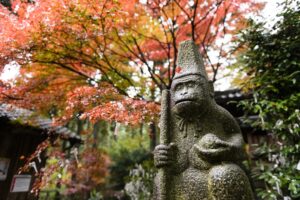
投稿タイプ:sightseeing
Sarumaru-jinja
The Sarumaru-jinja shrine is dedicated to Sarumaru Dayu, who was a renowned waka (Japanese poem) poet. He is even featured in the Ogura Hyakunin Isshu (an anthology of one hundred waka) with the famous poem as follows: “Through mountain depths, where crimson leaves scattered, a buck's cry longing for a doe echoes. Hearing this, I feel most keenly the sorrow of autumn.” As the shrine's principal deity, Sarumaru Dayu is now widely worshipped for removing bumps from the body, as well as offering protection against cancer.
The shrine's monthly festival is held on the 13th of each month, with the grand spring festival on April 13th, and the grand fall festival on September 13th. Also, there is the fire ritual on June 13th and December 13th.
The forest path from the first torii (a traditional gate of a Japanese shrine) to the main hall is ablaze with the vibrant colors of Japanese maple leaves from November to December. You can experience the scenery that inspired that poem.
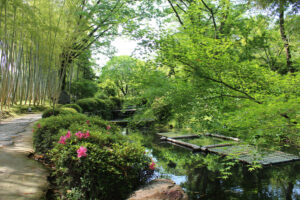
投稿タイプ:sightseeing
Shokado Garden and Art Museum
Shokado Garden and Art Museum is associated with Shokado Shojo (1584-1639), a Buddhist priest of Takimotobo, one of the small temples that comprised Iwashimizu Hachimangu at that time.
The garden spans over 20,000 square meters and includes the Shokado hermitage, where Shojo lived after his retirement. (Please note that as of February 2025, the hermitage is generally not open to the public except on special opening days.) The garden also features three chashitsu (houses for tea ceremony): Shoin, Chikuin, and Baiin. With over 40 species of bamboo, more than 300 camellia trees, and a variety of other plants such as hydrangeas, plum, cherry, and maple trees, the garden offers beautiful scenery throughout the four seasons.
Inside the museum, visitors can enjoy works by Shojo and other artists. Special exhibitions are held in spring and fall every year, and exhibitions focusing on the museum’s collection are presented about three times a year.
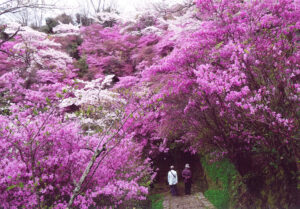
投稿タイプ:sightseeing
Jindoji Temple
Jindoji Temple is located in the mountains of Kizugawa City, in the southern part of the Kyoto Tea Country region. The temple houses numerous Important Cultural Properties, which can be viewed through a guided tour led by the priest. In spring, the precincts transform into a vibrant spectacle of pink and reddish purple hues, as cherry blossoms and azaleas form a flower tunnel over the stone steps leading up to the bell tower.
The temple is said to have been built by Prince Shotoku (around 574-622) and later prospered as a training ground for Shugendo, a mountain asceticism. The mountain where the temple stands was once home to many temple buildings, but they were all burned down in a fire. The current main hall, Zao-do Hall, dates back to 1406, which is designated as an Important Cultural Property. It enshrines a statue of the temple’s principal deity, Zao Gongen, which is from the Muromachi Period (around 1336-1573). Legend has it that the original statue of Zao Gongen created at this temple was carved by En no Gyoja during his ascetic training, who is said to be the founder of Shugendo.
In addition to the main hall, there are many other Important Cultural Properties, including six wooden statues in the repository: Seated Aizen Myo-o (Rāgarāja, one of the Buddhist Wisdom Kings), Standing Fudo Myo-o (Acala, one of the Buddhist Wisdom Kings), Seated Amida Nyorai (Amida Buddha), Standing Nikko (Sunlight) and Gakko (Moonlight) Bodhisattvas, and Standing Bishamonten (Vaiśravaṇa, one of the Four Heavenly Kings).
If you walk to the temple from Tanakura Station on the JR Nara Line, you can enjoy the scenery of the tea plantations and refreshing mountain air.
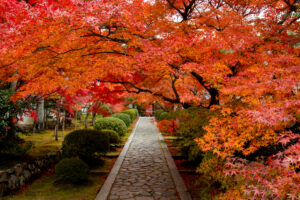
投稿タイプ:sightseeing
Ikkyuji Temple
In ancient times, there was a Zen training monastery here, but it was destroyed in a war. In the Muromachi Period (1336-1573), the Buddhist priest and Zen master Ikkyu Sojun restored it. He is widely known in Japan for his wit and wisdom, and is the subject of various fun stories.
The temple is also known for its beautiful Shuon’an Rock Gardens that are designated as a Place of Scenic Beauty. It includes the Hojo Garden that consists of the north, east, and south gardens. Each garden has its own distinctive features and is a superb example of karesansui (traditional Japanese Zen rock garden). Also, the temple houses 9 Important Cultural Properties such as the main hall, the abbot’s hall and the seated Ikkyu Osho statue.
At the temple, visitors can enjoy traditional Shojin Ryori (Buddhist Vegetarian Cuisine), as Japanese Buddhist monks have had for centuries. There are options from tenshin (a light meal) to Makunouchi (a popular type of Japanese boxed meals) and Honzen (a classic multi-course meal). This temple’s signature, fermented soybeans called Ikkyuji Natto, is interesting, too. It is popular for its rich, unique flavor, and many visitors purchase it to bring home. Traditionally, making Ikkyuji Natto is one of the tasks for the temple’s incumbent chief priest.
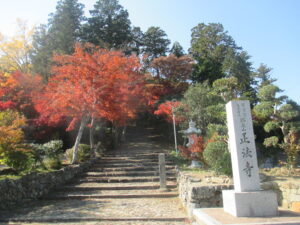
投稿タイプ:sightseeing
Shoho-ji Temple (Wazuka Town)
It is said that a Buddhist monk Gyoki established Shoho-ji Temple to pray for the repose of Prince Asaka, one of Emperor Shomu's sons, in the Nara Period (710-794). The temple was devastated by war at the end of Kamakura Period (1185-1333), and moved to its present location in the Edo Period (around 1603-1868).
In the fall, you can see the temple precincts adorned with brilliant ginkgo and Japanese maple trees. The approach is amazing with vibrant fall colors as well. Furthermore, the temple's architecture adds the unique atmosphere to the beautiful place. You can also enjoy a wonderful view of tea fields, a reminder that Wazuka is a fascinating place called Chagenkyo (Teatopia).
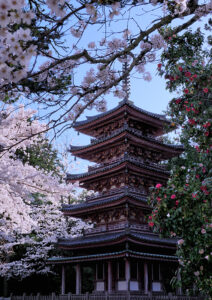
投稿タイプ:sightseeing
Kaijusenji Temple
Legend has it that Fujioyama Kannonji Temple was founded in 735 when Emperor Shomu ordered the Buddhist monk Roben to build a hall and enshrined the Eleven-Headed Kannon Bodhisattva to pray for the safe construction of the Great Buddha statue of Todai-ji Temple.
Unfortunately, the temple was burnt down in 1137. In 1208, Jokei, a monk of Kasagidera Temple, moved to the ruins, and built a hermitage for Buddhist practice. The place was renamed Fudarakusan Kaijusenji Temple and revived.
The five-storied pagoda is designated as a National Treasure. The vermilion pagoda, standing 17.7 meters tall, is a precious relic completed in 1214. The temple houses many other treasures. For example, there are many Important Cultural Properties, including the principal image of the Standing Eleven-Headed Kannon Bodhisattva, the Monjudo hall, a Mandala (a sacred geometric design) of the Lotus Sutra painted in color on silk, and documents about the temple.
The temple precincts offer much more to see. The eggplant-shaped bench is believed to fulfill wishes when sitting on it. You can also see a huge Yamamomo (Japanese Bayberry) tree that is one of the “200 Selected Nature Sites of Kyoto.”
Moreover, nestled in the mountains at a height of approximately 200 meters, the temple offers a great view of the Mikanohara area, where the “phantom capital” of Kunikyo was located. On a clear day, you can even see the ruins of Heijo Palace in Nara. The scenery is even more beautiful when viewed with the fall foliage. The temple is also amazing in spring, with cherry blossoms in bloom.
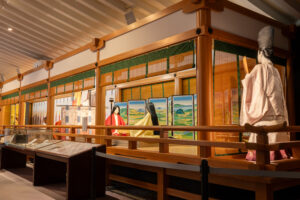
投稿タイプ:sightseeing
“The Tale Of Genji Museum, UJI”
The Tale of Genji is a worldwide-known masterpiece of classical Japanese literature written by Murasaki Shikibu in the Heian Period (794-1185). It depicts the romantic entanglements of a fictional character Hikaru Genji, an extraordinarily handsome nobleman. The final 10 chapters of the tale, after his death, are set in Uji. At this museum, there is a touchscreen display with comprehensive English explanations, a fun interactive game in English, and various other attractions, such as colorful exhibits and animated movies, allowing you to experience the glamorous world of The Tale of Genji. The museum offers fascinating glimpses into various aspects of Japanese culture in the Heian Period, including fashion, architecture, and vehicles.
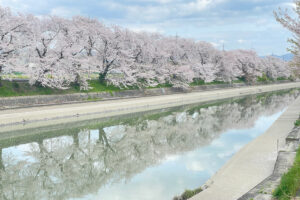
投稿タイプ:sightseeing
Cherry Blossoms Along Maekawa Dike
Maekawa Dike in Higashi-Imoarai is a beloved destination for hanami (cherry-blossom viewing), drawing crowds of all ages each spring. As one of the “200 Selected Nature Sites of Kyoto,” the beautiful promenades offer a quintessential Japanese spring scene. Mainly somei-yoshino (the most popular variety of sakura) trees line both banks of the river. When the petals fall, they float on the water, creating a picturesque sight. The reflection of the blossoms in the river adds to the enchanting ambiance. In the evening, the trees are illuminated, which creates a magical spectacle.
After immersing yourself in the beauty of the spring, consider visiting The Original Yamada Residence nearby. Its imposing appearance reminiscent of a Buke-Yashiki (samurai house) is amazing. Also, you can rent an electric bike at Machinoeki Crosspeer Kumiyama, and enjoy cycling. It only takes about 10 minutes to arrive at Maekawa Dike. After viewing the cherry blossoms, you can explore the town at your own pace.
As a side note, "Higashi-imoarai (東一口)" is an interesting name that many Japanese people struggle to read its simple kanji (Chinese characters).
